Tesla Sued Over Supercharging Fees, Broken Promises

Tesla is being sued in California by an owner that’s claiming the automaker broke its promise of a lifetime of free charging after it started imposing fees upon people who allowed their cars to sit at stations for too long. For those of you that don’t recall, Tesla began rolling out its Supercharger network in 2012 and promised unlimited free charging as a way to entice early adopters. While it doesn’t pertain to all vehicles and has existed in various incarnations, gratis electricity was available on most properly equipped Model S and Model X purchased by 2016. But the deal has existed in various incarnations through 2020 and has been confusing customers almost as much as the apparently bogus self-driving suite.
As the brand became more popular, you’d start seeing Tesla owners populating Supercharging stations in greater numbers and chattering about their interests. Unfortunately, those extended diatribes on the merits of TEDx and spending a fortune on minimalist interior home design resulted in stations being occupied but going unused. To discourage this Tesla began imposing fines in 2016, noting that it hoped never to make money on the updated arrangement.
This is what encouraged Kevin Shenkman to sue the automaker in California state court. According to Bloomberg, Shenkman is attempting to represent all early Tesla adopters in the suit and would like the company to stop the practice of imposing charging fees. He’s also seeking punitive damages for what he believes is the company going back on its word and reimbursement for anyone who was promised free charging and had to pay a fine.
Alameda County court documents allege that Tesla’s often come into effect swiftly after the vehicle has accumulated its full charge, allotting an insufficient period for a driver to return to the car. While that wouldn’t be too bad if you only had to walk away for a couple of minutes, Tesla owners might have to leave the car alone for an hour to recoup the maximum amount of electricity. Meanwhile, the company offers a feature that allows motorists to check the status of proprietary charging stalls in advance with a fair degree of accuracy.
Loitering fees come into play instantly and tack on anywhere from fifty cents to a dollar per minute, depending on how full the station happens to be. If you manage to move the car within the first five minutes, all charges are supposed to be nullified.
Considering all of the above, it seems as though both the company and the customer should be able to navigate the issue without entering into a legal battle. If you’re keeping tabs on your vehicle, you should be able to get it unplugged within five minutes. Of course, Tesla probably doesn’t need to be charging people 50 cents a minute for letting their car linger in an otherwise empty lot.
Of course, Shenkman is claiming this is a matter of principle and effectively accusing the automaker of lying to its customers since it’s effectively barring people from free charging if they think the “congestion fees” are out of whack.
“To compound the matter, when a customer, such as plaintiff, who has been promised free Supercharging for life, refuses to pay such ‘Supercharger fees,’ Tesla cuts off Supercharging access entirely, thus disabling a feature for which customers paid thousands of dollars extra to obtain,” Shenkman told the court.
This isn’t the first time something like this has happened either. Tesla was previously been chided by independent repair shops and owners for digitally stripping vehicles of content after they hit the secondhand market. Despite the original owners having paid for things like Full-Self Driving (FSD) and Autopilot, the company decided that those items didn’t necessarily need to be carried over to subsequent owners — despite its own customer service department saying otherwise.
But it would be a mistake to target Tesla exclusively. These are trends that are becoming increasingly commonplace with manufacturers and are likely to accelerate as over-the-air updates and data sharing become ubiquitous features of the modern automobile. If you’re not interested in having carmakers charge you to digitally unlock features already installed in your vehicle (likely via subscription fees) or hit you with punitive fines for living your vehicle somewhere, you might want to make your voice heard or get ready for a lifetime of buying increasingly ancient vehicles.
Ah, the marvels of automotive connectivity. Unparalleled convenience all focused in a way that burdens the customer.
[Image: Welcomia/Shutterstock]

A staunch consumer advocate tracking industry trends and regulation. Before joining TTAC, Matt spent a decade working for marketing and research firms based in NYC. Clients included several of the world’s largest automakers, global tire brands, and aftermarket part suppliers. Dissatisfied with the corporate world and resentful of having to wear suits everyday, he pivoted to writing about cars. Since then, that man has become an ardent supporter of the right-to-repair movement, been interviewed on the auto industry by national radio broadcasts, driven more rental cars than anyone ever should, participated in amateur rallying events, and received the requisite minimum training as sanctioned by the SCCA. Handy with a wrench, Matt grew up surrounded by Detroit auto workers and managed to get a pizza delivery job before he was legally eligible. He later found himself driving box trucks through Manhattan, guaranteeing future sympathy for actual truckers. He continues to conduct research pertaining to the automotive sector as an independent contractor and has since moved back to his native Michigan, closer to where the cars are born. A contrarian, Matt claims to prefer understeer — stating that front and all-wheel drive vehicles cater best to his driving style.
More by Matt Posky
Latest Car Reviews
Read moreLatest Product Reviews
Read moreRecent Comments
- Akear The malibu still outsells all GM EVs combinedMalibu -150,000GM EV's - 75,000Maybe this represents how execrable GM EVs really are. Barra should have resigned years ago,
- Fred Short term bean counters give up the market and long term players gain shares.
- KOKing I thought they quit making it 3yrs ago so... no?
- TheEndlessEnigma Hybrids and PHEVs make sense, EV's do not.
- Ajla My understanding is that the 5 and 7-Series cater almost exclusively to the Chinese market and they sell them here just so they don't look weak against Mercedes and Audi.
















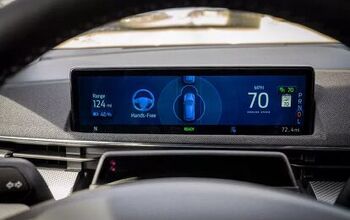
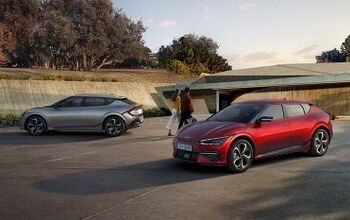
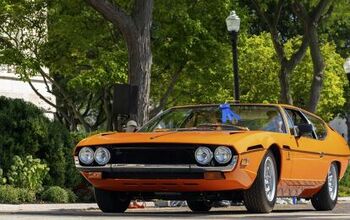
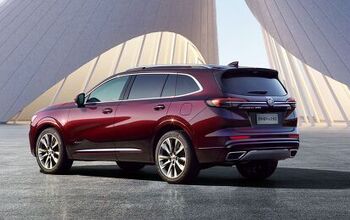
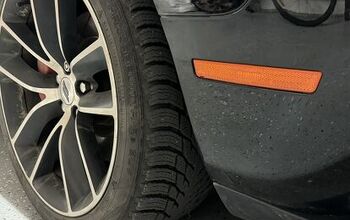
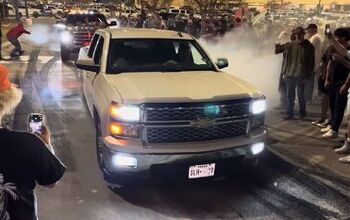

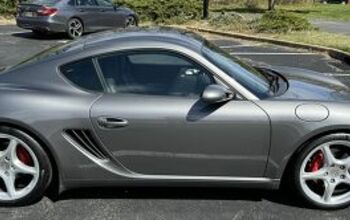




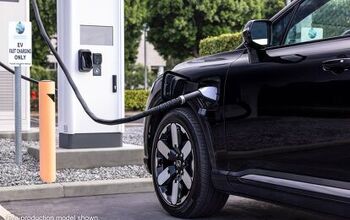
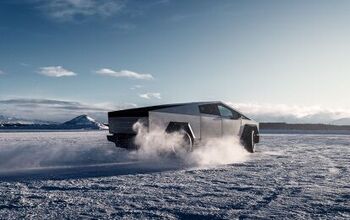
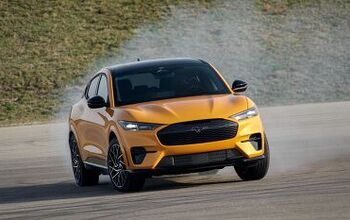
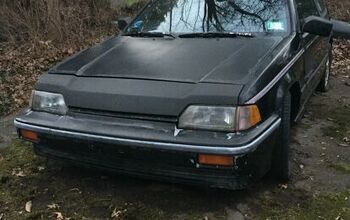
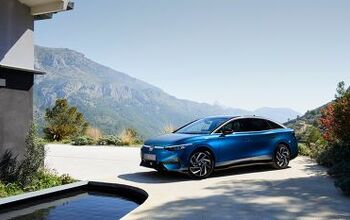

Comments
Join the conversation
The problem for BEVs is an insufficiency of chargers. The Tesla Supercharger network in the US is about 1,000 locations. That's an impressive accomplishment and a testament to the company's wisdom in realizing that, without a cross country charging network, its products could never be more than secondary vehicles limited to local errands. Without the network, size and luxury would be the only differences between a Model S and a Leaf. By comparison, there are about 180,000 gas stations. That works out to one station for every 17 square miles. Obviously, the distribution is not uniform and there are still a few highways with signs that read, "No services for XX miles" where XX is a number approaching 100. Nevertheless, it's almost never necessary to plan your trip around fuel stops. With a BEV, you absolutely do have to plan your trip around recharging points. The Tesla Supercharger network consists of clusters of chargers in urban areas connected by strings of chargers in rural areas to get you from one urban cluster to the next. On the east and west coasts, there are so many strings that everything begins to resemble a huge cluster. If that's where you live and drive, you're never very far from a Supercharger. It's much different in the western mountain states. There are Superchargers along the east-west interstates in North and South Dakota, Nebraska, Kansas, Oklahoma and Texas but not in between them. A BEV owner who wants to stray off the interstates is pretty much limited to half his vehicle's real world range. Consider the little town of Weeping Water, population 1,100, about 30 miles south of Omaha in Nebraska. There are two gas stations in town, one of which is open at all hours. There are also 24-hour gas stations in Louisville, 12 miles north, and Syracuse, 17 miles south. The nearest Superchargers are in Council Bluffs, across the Missouri River from Omaha, and in Topeka, Kansas. Until there are Superchargers or their equivalents in Louisville, Weeping Water and Syracuse plus Nebraska City, Auburn, Sabetha and Holton, BEVs will remain niche vehicles and those who own them will be early adopters much like the owners of ICE vehicles in the early 20th century. Dwight Eisenhower's support of a national interstate highway system stemmed in part from his struggles as commander of a 1919 military convoy from Washington, DC to San Francisco.
I don't live in Weeping Water but I live in flyover territory. I worry that rural America will bear the cost of a city technology (EV vehicles) while being taxed more for gas /road use in the near future. I got into a semi-heated argument with a buddy regarding his new Tesla X winged, and he mentioned that Tesla had over 20,000 superchargers and my eyes widened.And then he mentioned the Tesla dealer told him you won't be ablt to buy a IC car in 10 years. I laughed, and he postured. Later that evening I realized that this encompassed only 1200 locations with several per location. Thats ok because in 2021 EV doesn't fit my driving habits (200 mile rural commute 2 weeks a month) nor aspirational.